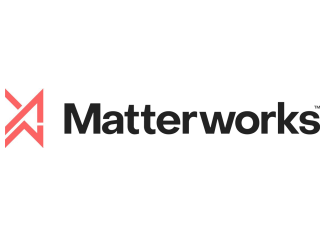Bolsters innovation agility by embedding ML Ops practices, aligning data science and IT workflows to ensure reliable, scalable AI deployments and a culture of continuous improvement.
Discover how ML and active learning techniques are revolutionizing the search for promising drug candidates in vast chemical libraries, accelerating hit identification.
Learn how AI models navigate ultra-large chemical spaces, prioritize bioactive compounds, and streamline the discovery of potential hits for further development.

Lingling Shen
Explore how AI accelerates antibody discovery by enabling de novo design, epitope prediction, and in silico affinity maturation for highly specific, developable therapeutics.
Learn how deep learning and structure-based models optimize antibody stability, immunogenicity and target binding to advance precision biologics.

Petar Pop-Damkov

Eli Bixby
Eli makes sure Cradle's models and algorithms are doing what we think they are doing, and he keeps an eye out for the latest and greatest techniques in the literature. He was previously at Google (Brain, Accelerated Science, Cloud) working on biological sequence design, AutoML, and natural language understanding. He studied mathematics, computer science, and biochemistry

Claudette Fuller

Gevorg Grigoryan
Cradle
Website: https://www.cradle.bio/
Cradle's software helps scientists leverage the latest technological breakthroughs in AI to rewrite biology and unlock new therapeutics, materials, and food sources. Generate novel protein candidates, improve multiple properties simultaneously, and run fewer experiments to create optimized leads.
Explore how ML-enabled real-time control systems and continuous process verification improve yield predictability, reduce rework, and enable faster release - offering a direct line of sight to cost savings and product quality gains.
Strategic insights from complex, high-dimensional healthcare data, fostering integrated analytics and strengthening the organization’s competitive edge in precision medicine.
1. Regulatory workflows are complex but structured.
The presentation highlights that regulatory processes—spanning data management, authoring, reviewing, publishing, and health authority queries—are intricate yet follow consistent patterns. They are highly collaborative, interdependent, and mission-critical to bringing therapies from candidate nomination to market
2. AI is powerful but needs context and precision.
While AI excels at understanding and summarizing information, it struggles with reasoning and lacks domain-specific (drug development) context. Effective use of AI in regulatory work requires clear task definition—large enough to matter, but small enough to manage
3. Human-AI collaboration transforms regulatory efficiency.
When applied thoughtfully, AI can make regulatory work up to 100× faster without compromising quality—reducing months of effort to hours. Studies with Takeda and partnerships with Parexel demonstrate how AI can accelerate timelines, elevate human expertise, and make portfolio knowledge computable across programs

Lindsay Mateo
Weave Bio
Website: https://www.weave.bio/
Weave Bio is an AI-native company reimagining how life science organizations navigate regulatory work. Through its core product, the Weave Platform, Weave brings intelligence, structure, and collaboration to every stage of the regulatory process.
The Weave Platform connects people, data, and technology in a unified workspace that combines AI-powered drafting, source-linked data, and configurable workflows. By keeping experts firmly in the loop, it transforms complex, manual regulatory work into transparent, traceable, and collaborative processes.
Built for biotech, pharma, CROs, and regulatory consultants, Weave supports the full regulatory lifecycle—from early development through submission—helping teams move faster, maintain quality, and scale with confidence.
Learn how AI models enhance physics-based simulations to predict molecular interactions and optimize drug design.
Discover the synergy between machine learning and classical methods to accelerate screening and improve the accuracy of drug discovery.

Sreyoshi Sur
Explore how AI enhances biomarker discovery by analyzing large datasets to uncover novel biomarkers for disease diagnosis and therapeutic efficacy.
Learn how integrating digital biomarkers with AI improves the interpretation of data from wearable devices and traditional lab-based biomarkers for better patient stratification and treatment personalization.

Nikolaos Patsopoulos

Jack Geremia

Satarupa Mukherjee

Virginia Savova
Matterworks
Website: https://www.matterworks.ai/
Matterworks is unlocking predictive biology through an AI-powered platform that immediately uncovers actionable discoveries hidden in LC-MS raw data. Our Large Spectral Model (LSM) has been trained on billions of proprietary raw LC-MS spectra across diverse applications. Built on this foundation, the Pyxis query system leverages the LSM to rapidly identify biomolecules without disparate, time-consuming, and laborious downstream processes.
Available in application-specific configurations, Pyxis transforms conventional manual processing into immediate AI-driven results, expanding the breadth and speed of biomarker discovery, upstream bioprocess optimization, and downstream process development.
Matterworks brings together expertise in AI, software engineering, and analytical chemistry to bridge the gap between raw data and phenotypic endpoints hidden in the dark matter. By developing our AI-powered platform for rapid biomolecule discovery, identification, and concentration determination, we are creating the new standard for researchers, data scientists, and industry leaders to uncover previously unattainable insights and accelerate decision-making across discovery and development.
Examine how AI models are being developed, validated, and governed to meet regulatory expectations, with practical insights into documentation, auditability, and lifecycle management to ensure safe, transparent, and compliant deployment in GxP environments.
Guides strategic IT decisions by clarifying trade-offs between cloud and on-premise solutions, to align infrastructure strategy with agility, security, and compliance objectives.


